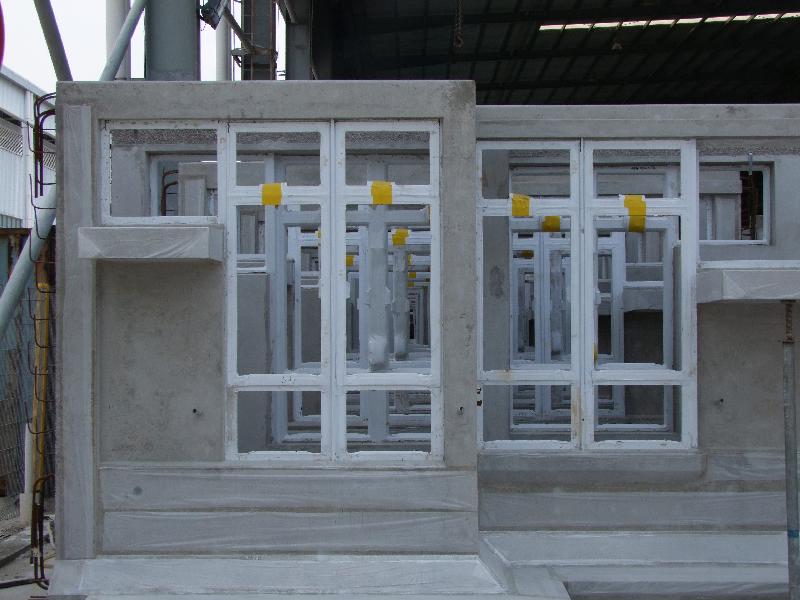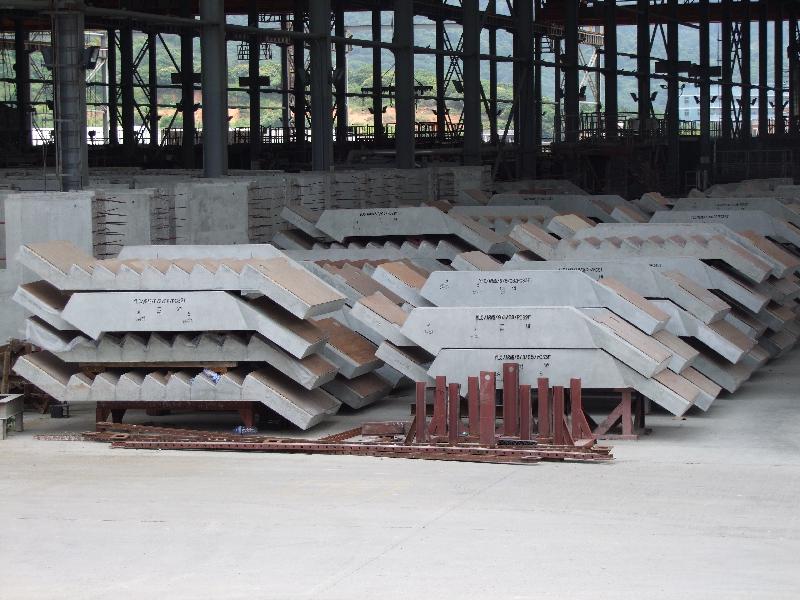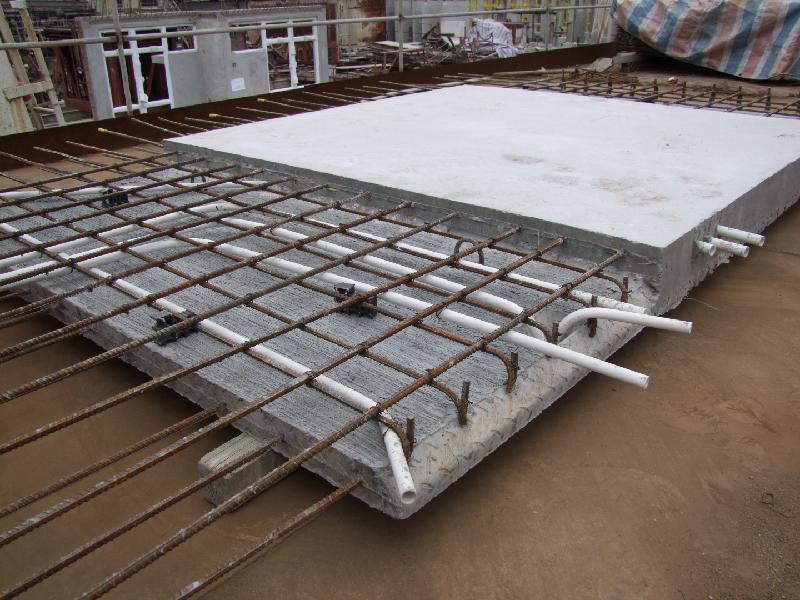Housing Authority increases use of precast concrete components and mechanised construction (with photos)
******************************************************************************************
The construction industry in recent years has been facing the problem of labour shortage and an ageing workforce while housing demand has remained strong. Given this background, the industry has been proactively searching for innovative construction methods and advanced technology to reduce the reliance on labour and enhance productivity. The development of public housing under the Hong Kong Housing Authority (HA) in fact has long been ahead of its time in this regard.
"The comparatively large scale and extensively repetitive nature of public housing developments permit the use of highly mechanised construction methods which involve the use of advanced construction plant and prefabrication technology to reduce the reliance on labour for construction activities while enhancing productivity as well as safety on-site," a spokesman for the HA said today (September 15).
With such characteristics of public housing developments, the HA has developed various precast concrete components (PCCs) which not only enhance construction quality, site safety and the working environment but also expedite the construction programme and increase productivity.
"Mechanised construction in public housing developments in the past few decades has comprised the use of standardised PCCs, large-panel metal formwork and fabric mesh with tower cranes for lifting," the spokesman said.
The history of using PCCs in public housing developments can be traced back to the 1960s, when 16-storey public housing blocks were constructed with precast concrete panels. Thereafter, the HA has been developing and applying precast concrete technology in construction works such as precast facades, precast staircases and semi-precast slabs. In the 1990s, the average precast concrete volume adopted in the HA's projects was about 18 per cent.
In 2008, the HA began to adopt modular flat design to optimise site potential under the principle of "functional and cost-effective" design. The volume of precast concrete of the public housing developments with the basic PCCs was about 20 per cent then, which would be increased to 35 per cent if volumetric precast bathrooms were adopted.
Subsequently, public housing developments have started to use precast ground floor water tanks, precast roof water tanks and precast roof parapets where applicable to suit different project requirements to enhance the quality and safety and expedite the construction programme since 2011.
Precast acoustic balconies were also adopted as a mitigation measure to avoid severe noise impact since a pilot project in 2013. (Please refer to the attachment for illustration of the use of PCCs in public housing developments.)
With experience accumulated over more than 25 years of application in the HA's projects, practitioners in the construction industry hold the general view that mechanised construction is a reliable, quality and safe means of construction. The productivity of public housing construction is currently maintained at a high level with a six-day construction cycle for a typical floor and the worker per flat ratio is around 0.12. The overall construction costs of public housing projects are about 40 per cent lower than those of comparable residential developments in the private sector, the spokesman said.
The Government last year launched a new initiative to promote and lead the adoption of modular integrated construction (MiC) in the construction industry. By adopting the concept of "factory assembly followed by on-site installation" and the mode of manufacturing, labour-intensive processes can be accomplished in an off-site prefabrication yard with a view to enhancing productivity and cost-effectiveness.
"The HA is open and receptive to new initiatives as always if it could enhance quality, safety, productivity and environmental performance," the spokesman said.
He said that there are issues to be resolved for MiC technologies if they are deployed for high-rise and high-density public housing developments in Hong Kong's context. They include statutory requirements, technical viability, site constraints, cost-effectiveness, productivity enhancement and availability of temporary storage areas.
"Unlike hostel or hotel developments which have a lot of architectural finishes and building services installations, the edge for productivity enhancement is yet to be explored in public housing developments since we have already adopted modular flat design with no-frills finishes and no-frills fittings and installations," the spokesman added.
The HA is conducting a viability study to examine whether it is appropriate to adopt MiC for public housing development projects with consideration of the above-mentioned issues. The final report is tentatively scheduled to be completed by the end of this year.
For its current projects, the HA has been exploring to extend the use of PCCs such as precast structural walls and corridor slabs where practicable to further enhance buildability and productivity.
Ends/Saturday, September 15, 2018
Issued at HKT 10:00
Issued at HKT 10:00
NNNN








